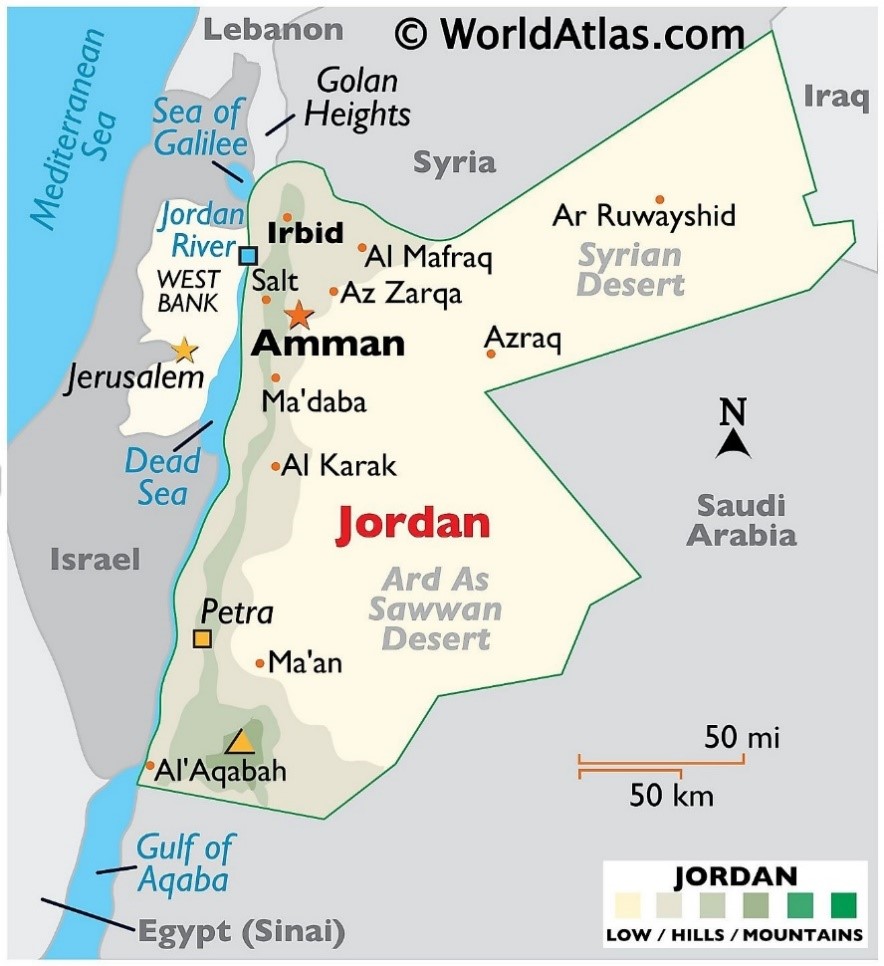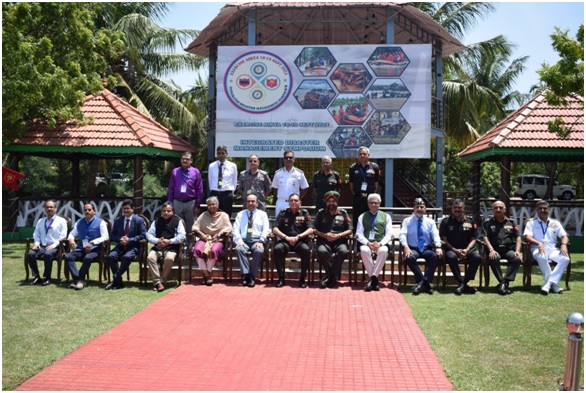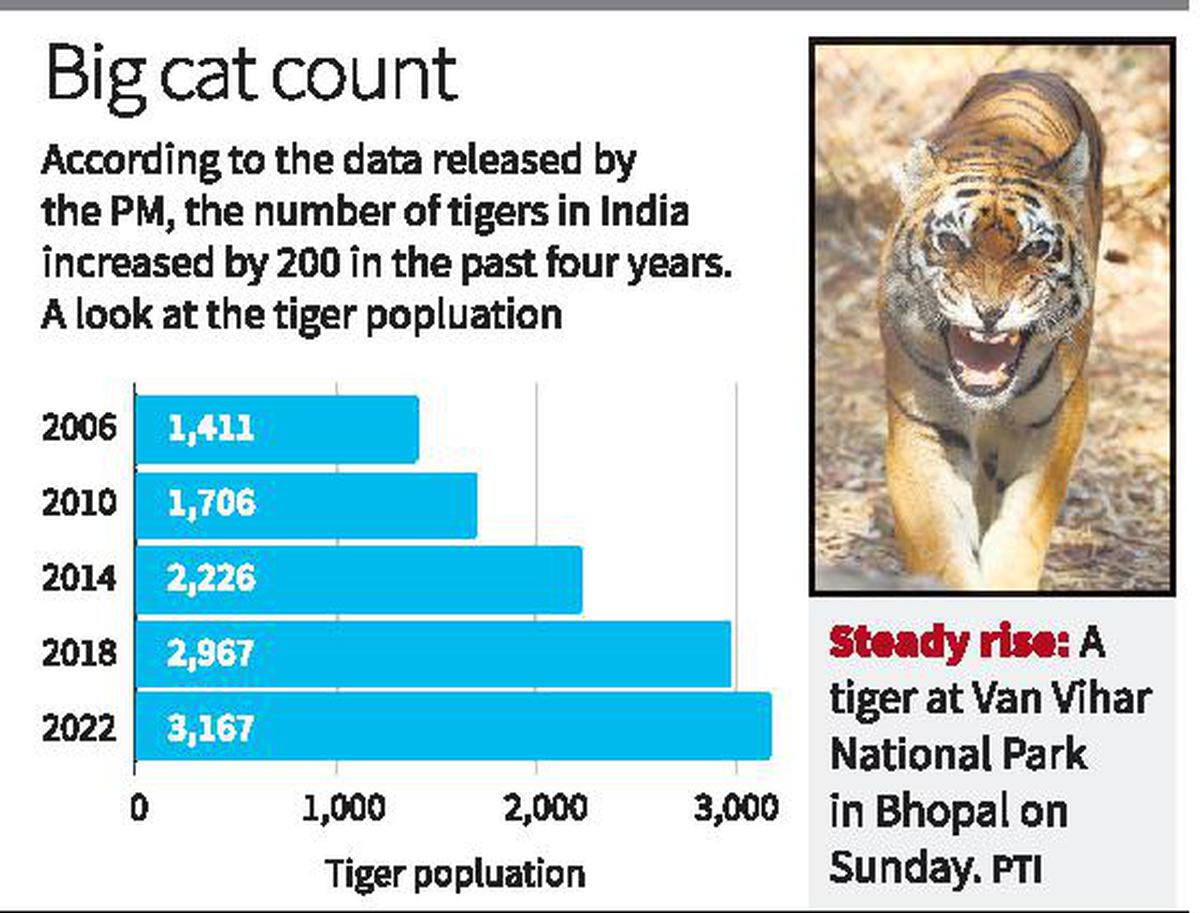JORDAN

- 21 Sep 2024
In News:
Jordan has made history by becoming the first country in the world to be officially verified by the World Health Organization (WHO) as having eliminated leprosy. This achievement marks a significant advancement in global public health efforts.
Key Highlights:
- WHO Recognition: WHO Director-General Dr. Tedros Adhanom Ghebreyesus praised Jordan for this milestone, emphasizing the importance of stopping transmission and alleviating the suffering and stigma associated with leprosy.
- Historic Achievement: This success is not just about disease elimination but also about combating stigma and socio-economic harm.
- No Local Cases: Jordan has not reported any locally transmitted cases of leprosy for over two decades, demonstrating its effective public health strategies and strong political commitment.
- Independent Verification: WHO commissioned an independent team to conduct a thorough assessment, leading to the official recognition of leprosy elimination.
- Ongoing Vigilance: While celebrating this success, both the WHO and the Jordanian Ministry of Health emphasize the need for robust surveillance systems to detect and manage any future cases, including those from abroad.
Additional Context:
Leprosy, or Hansen's disease, is a chronic infectious condition caused by Mycobacterium leprae, primarily affecting the skin and nerves. Although it remains a neglected tropical disease, with over 200,000 new cases reported annually across more than 120 countries, Jordan's success showcases the potential for eradication through dedicated efforts.
This milestone serves as a beacon of hope, illustrating that with strong commitment, collaboration, and strategic planning, even longstanding public health challenges can be addressed effectively.
EXERCISE AIKYA

- 21 Sep 2024
In News:
The National Disaster Management Authority (NDMA), in partnership with the Indian Army's Southern Command and the Tamil Nadu State Disaster Management Authority (TNSDMA), recently conducted "EXERCISE AIKYA" in Chennai. This two-day Integrated Symposium and Table Top Exercise (TTEx) aimed to bolster disaster preparedness and response among key stakeholders across Peninsular India.
Key Highlights:
- Objective: "Aikya," meaning "Oneness" in Tamil, sought to unify India’s disaster management community by enhancing collaboration and preparedness.
- Participants: The exercise involved representatives from:
- Six southern states/UTs: Tamil Nadu, Kerala, Karnataka, Andhra Pradesh, Telangana, and Puducherry.
- Central ministries related to disaster management.
- State Disaster Management Authorities (SDMAs).
- Armed forces, including the Indian Army, Navy, and Air Force.
- Response agencies such as the NDRF, Indian Coast Guard, CRPF, CISF, and Railways.
- Early warning agencies including the IMD, NRSC, INCOIS, CWC, and FSI.
- Research institutions like NIDM, NIOT, IIT Madras, and DAE, with Prof. CVR Murty of IIT Madras serving as the Exercise Mentor.
- Focus Areas: The exercise simulated various emergency situations, covering:
- Tsunamis, landslides, floods, cyclones, industrial incidents, and forest fires.
- Recent disaster events in Tamil Nadu, Wayanad, and Andhra Pradesh.
- Discussions: Participants engaged in discussions about:
- Leveraging technology and AI for disaster management.
- Economic impacts of disasters.
- Vulnerabilities specific to the Peninsular region.
- Strategies for improving response times.
Future Plans
"EXERCISE AIKYA" marks a crucial step towards strengthening India’s disaster management framework. The NDMA and the Southern Command plan to conduct similar exercises with other military commands and institutions, including the Army War College and Naval War College, to further enhance national disaster preparedness and response capabilities.
EUROPA CLIPPER MISSION

- 21 Sep 2024
In news:
NASA is preparing to launch the Europa Clipper mission, which aims to investigate Jupiter's icy moon, Europa.
Key Details:
- Objective: This mission will place a spacecraft in orbit around Jupiter to conduct a thorough study of Europa, focusing on its potential habitability.
- Significance: Europa Clipper will be NASA's first mission specifically designed to explore an ocean world beyond Earth. Europa is believed to have a subsurface ocean beneath its icy surface, which raises the possibility of supporting life.
- Spacecraft Specifications:
- The spacecraft measures 100 feet (30.5 meters) from end to end and 58 feet (17.6 meters) across, making it the largest NASA spacecraft ever built for a planetary mission.
- Mission Plan:
- Europa Clipper will orbit Jupiter and conduct 49 close flybys of Europa to gather critical data regarding its environment and potential habitability.
- Instrumentation:
- Equipped with nine scientific instruments and a gravity experiment that leverages its telecommunications system, the spacecraft will maximize data collection by operating all instruments simultaneously during each flyby. This approach will allow scientists to compile comprehensive data layers, creating an in-depth understanding of Europa.
- Power Source:
- The spacecraft is outfitted with large solar arrays to harness sunlight for its energy needs while operating in the challenging environment of the Jupiter system.
Solar Array
A solar array is a collection of solar panels interconnected to generate electrical power. When combined with other components like an inverter and battery, it forms a complete solar energy system.
GLOBAL CYBERSECURITY INDEX 2024

- 21 Sep 2024
In News:
- India has achieved Tier 1 status in the Global Cybersecurity Index (GCI) 2024, published by the International Telecommunication Union (ITU), with an impressive score of 98.49 out of 100.
Role-Modeling Country: This accomplishment places India among ‘role-modeling’ countries, reflecting a strong commitment to cybersecurity practices globally.
Assessment Criteria: The GCI 2024 evaluates national efforts based on five pillars:
-
- Legal Measures
- Technical Measures
- Organizational Measures
- Capacity Development
- Cooperation
- Evaluation Methodology: The index utilized a comprehensive questionnaire comprising 83 questions, which cover 20 indicators, 64 sub-indicators, and 28 micro-indicators, ensuring a thorough assessment of each country's cybersecurity landscape.
- Tier Classification: The GCI 2024 report categorized 46 countries in Tier 1, the highest tier, indicating a strong commitment across all five cybersecurity pillars. Most countries fall into lower tiers, either “establishing” (Tier 3) or “evolving” (Tier 4) their cybersecurity frameworks.
Key Achievements
- Global Standing: India ranks at the top level of global cybersecurity rankings, showcasing its dedication to enhancing cyber resilience and securing its digital infrastructure.
- Government Initiatives:
- Robust Frameworks: Establishment of comprehensive frameworks for cybersecurity and cybercrime laws.
- Sectoral Support: Implementation of Sectoral Computer Incident Response Teams (CSIRTs) that provide technical support and incident reporting across various industries.
- Educational Integration: Cybersecurity has been integrated into primary and secondary education curricula to foster informed digital citizens.
- Public Awareness: Targeted campaigns have promoted secure online practices across multiple sectors, including private industry and academia.
- Skill Development and Innovation: The government has provided incentives and grants to enhance skill development and promote research within the cybersecurity sector.
- International Collaborations: India has engaged in numerous bilateral and multilateral partnerships to strengthen its capacity-building and information-sharing efforts.
About the International Telecommunication Union (ITU)
- Overview: Established in 1865, the ITU is the United Nations specialized agency for information and communication technologies, becoming a UN agency in 1947.
- Membership: ITU has 193 member countries and over 1,000 associated organizations, including companies and universities.
- Functions: ITU coordinates global radio spectrum allocation, sets technical standards for telecommunication, and works to improve ICT access in underserved communities.
- India's Involvement: India has been an active ITU member since 1869 and a regular participant in the ITU Council since 1952.
INDIA JOINS THE INTERNATIONAL BIG CAT ALLIANCE (IBCA)

- 21 Sep 2024
In News:
India formally joined the International Big Cat Alliance (IBCA), launched by Prime Minister Narendra Modi on April 9, 2023, during the 50th anniversary of Project Tiger.
- Objective: The IBCA aims to conserve the world's seven big cat species: tiger, lion, leopard, snow leopard, cheetah, jaguar, and puma, focusing on their protection and natural habitats.
- Founding Members: India joins Nicaragua, Eswatini, and Somalia as founding members of the IBCA, which will collaborate with 24 countries and nine organizations.
- Headquarters: The IBCA will be headquartered in India, facilitating efforts to protect big cats and their ecosystems.
Purpose and Goals of IBCA
- Conservation Focus: The alliance addresses common challenges in the protection of the seven big cats, promoting sustainable resource use and tackling climate change.
- Collaboration and Support: The IBCA will provide a platform for member nations to share knowledge, expertise, and support recovery efforts in potential habitats.
- Mobilization of Resources: The alliance aims to mobilize financial and technical resources for effective conservation strategies based on global experiences.
Background and Evolution
- Inception: PM Modi proposed an international initiative against poaching and illegal wildlife trade in 2019, advocating for collaboration among tiger range countries.
- Extension of Project Tiger: The IBCA serves as an extension of India's long-standing commitment to wildlife protection, initially exemplified by the launch of Project Tiger in 1973.
Big Cat Species Overview
- Tiger (Endangered)
- Population: Approx. 3,167 in India, accounting for over 75% of the global population.
- Threats: Habitat loss, poaching, and climate change impacting their territory.
- Lion (Vulnerable)
- Population: Estimated 700 in India.
- Threats: Habitat reduction and targeted poaching.
- Leopard (Near Threatened)
- Population: Around 13,000 in India, with approximately 250,000 globally.
- Threats: Habitat loss and human-wildlife conflict.
- Snow Leopard (Vulnerable)
- Population: 400-700 in India, with global estimates of 4,000-6,500.
- Threats: Poaching, habitat loss, and human disturbances.
- Cheetah (Vulnerable)
- Population: Declined to less than 7,000 globally; declared extinct in India in 1952.
- Threats: Habitat loss, climate change, and illegal trafficking.
- Jaguar (Near Threatened)
- Population: Approximately 173,000 globally, primarily in South America.
- Threats: Deforestation, illegal hunting, and habitat fragmentation.
- Puma (Near Threatened)
- Population: Estimated 50,000, experiencing a decline.
- Threats: Habitat loss and human-wildlife conflict.
Future Initiatives
- Translocation Efforts: Following successful cheetah translocations from Namibia and South Africa, India plans to explore similar initiatives for other big cats.
- Global Cooperation: The IBCA will strengthen conservation efforts by working with a broader network of range countries to combat poaching and promote habitat preservation.
